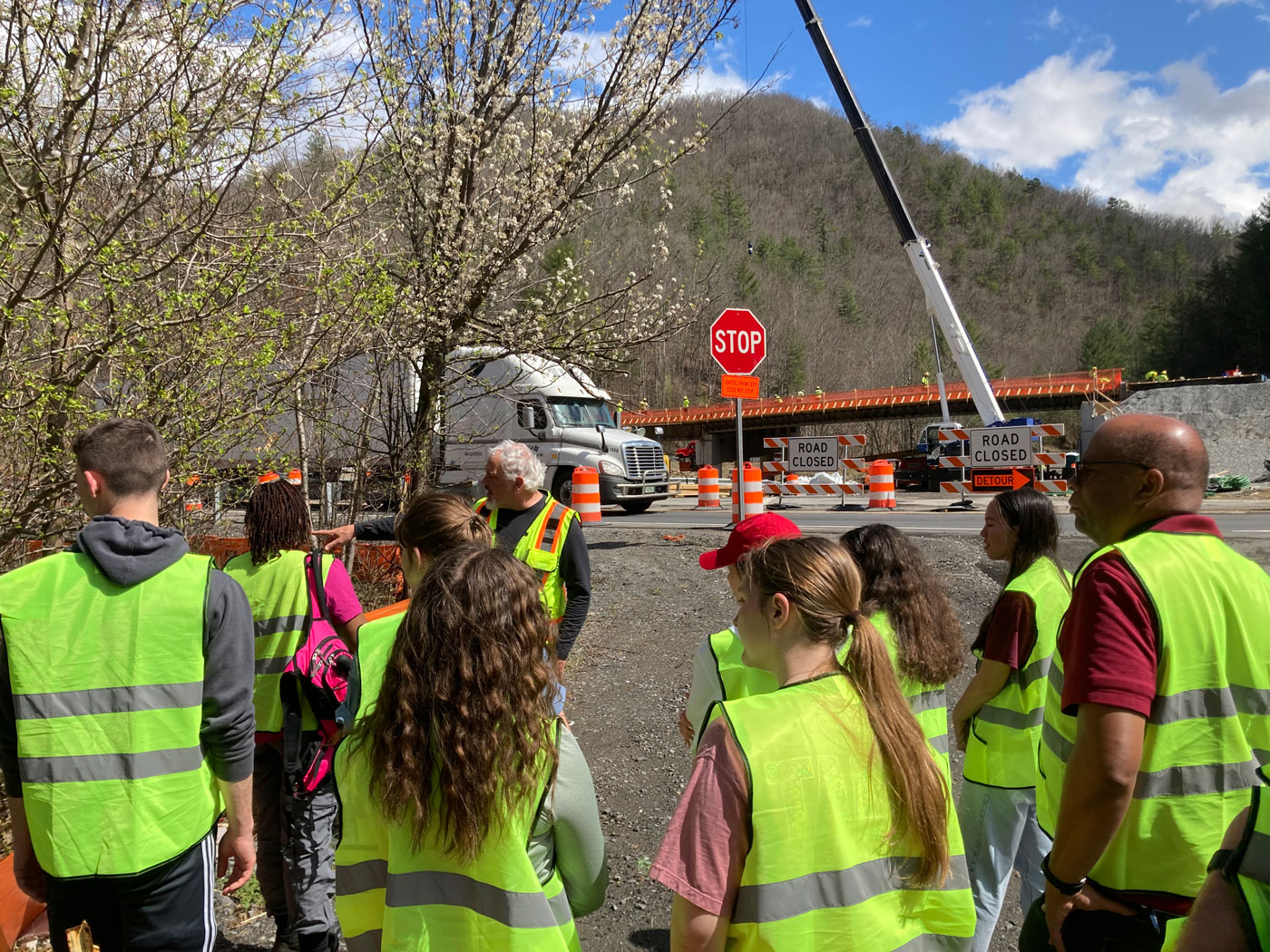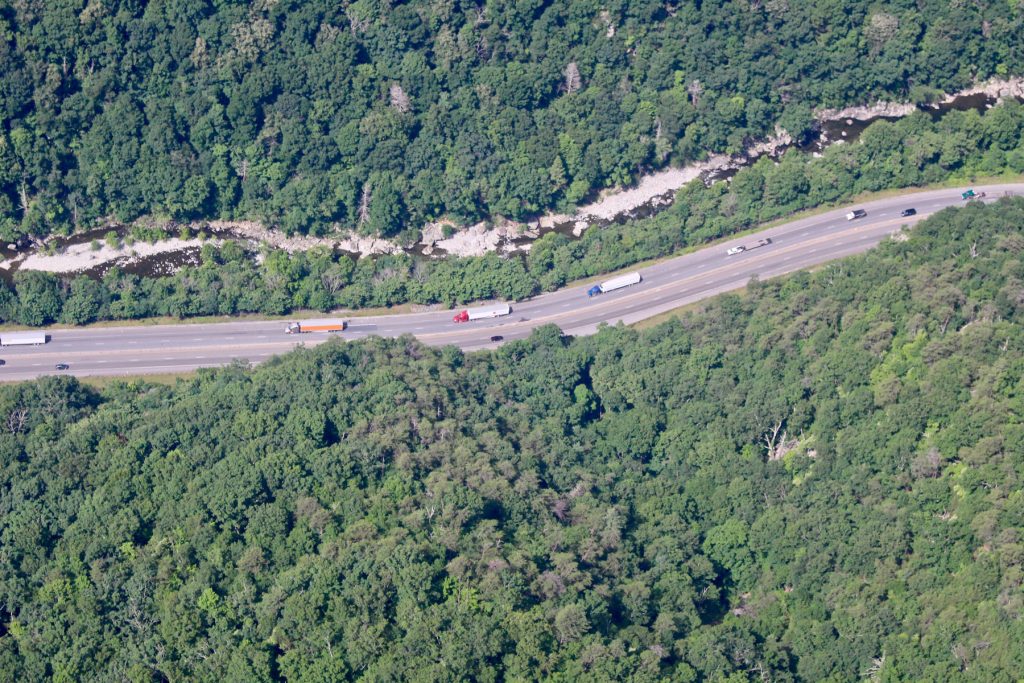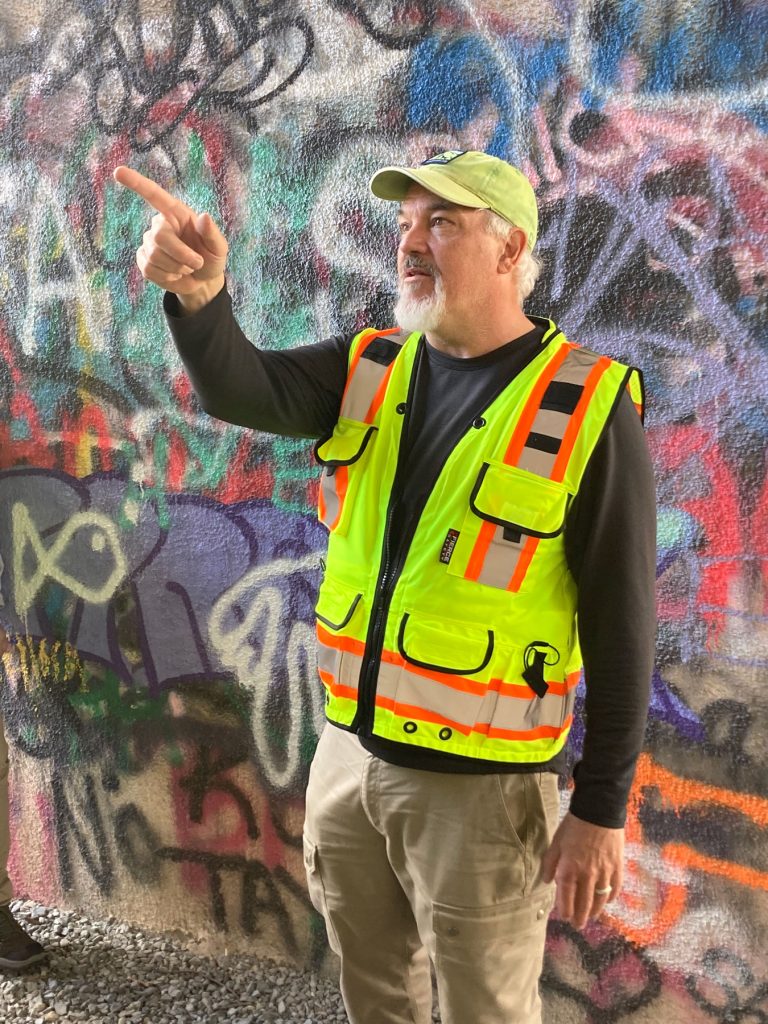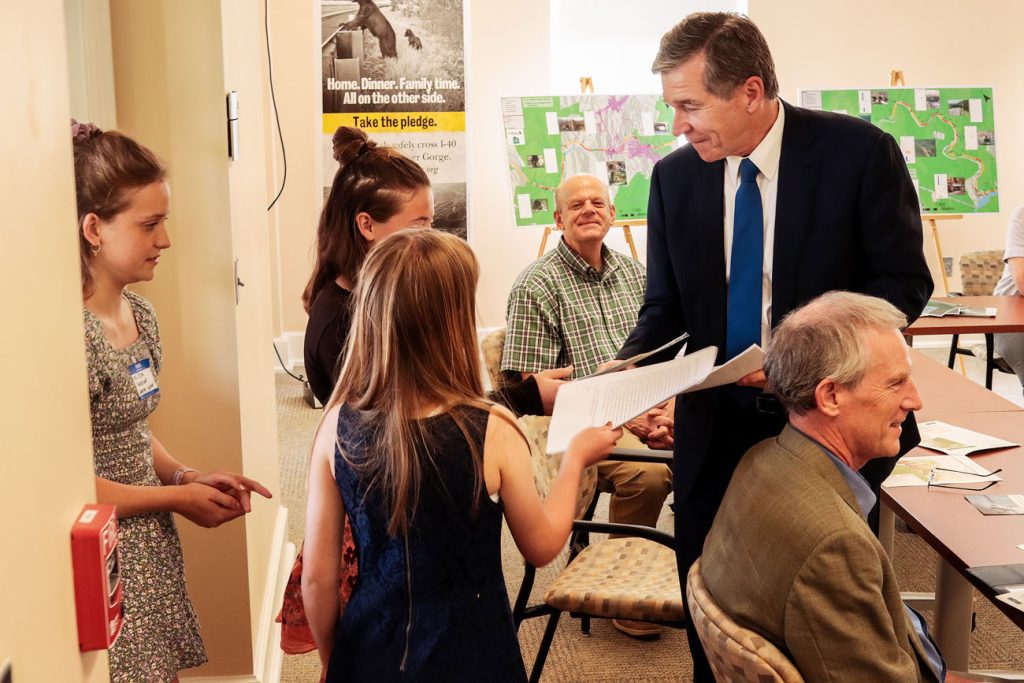

If you’ve traveled Interstate 40 between Asheville and Knoxville lately, you know there is some construction going on not far from the boundary of Great Smoky Mountains National Park. But what exactly is happening?
First of all, for some time the North Carolina Department of Transportation (NCDOT) has been gearing up to replace five bridges in the Pigeon River Gorge over about a five-year period. At the same time this was being planned, a group of regional organizations began discussing what could be done about the rising wildlife mortality—81 dead bears from Fall 2018 through 2021 alone—along a 28-mile stretch of road that includes the bridges slated for replacement.
That group became known as Safe Passage: The I-40 Pigeon River Gorge Wildlife Crossing Project, and both the North Carolina and Tennessee departments of transportation became active members of the collaborative.
An intensive three-year study conducted in the gorge by National Parks Conservation Association (NPCA) and Wildlands Network involved fitting elk with GPS collars to track their movements and employing hundreds of wildlife cameras to determine where many animal species were trying to cross as well as where they were getting killed in vehicle collisions. This research showed that these scheduled bridge replacements provided excellent opportunities to incorporate some enhancements to help wildlife cross the interstate using structures that have proved successful in decreasing wildlife mortality in other parts of the US and around the world.

“The new bridge over Cold Spring Creek was opened by the contractor ahead of schedule in mid-May,” said Jeffrey Hunter, facilitator for Safe Passage and senior program manager for NPCA. “NCDOT advised me that there will be some ramp closures due to ongoing drainage work at Harmon Den, but now that the bridge is reopened, work on the wildlife enhancements can begin.”
Hunter says these enhancements at the Harmon Den exit will include benching to create paths parallel to and on both sides of Cold Springs Creek that will allow animals to navigate under the bridge. This is especially important for larger species like elk and deer because previously large riprap prevented their passage. Wildlife fencing up to 10 feet high will be used to guide the animals to safe passage in conjunction with jump outs, one-way openings in a wildlife fence that allow animals to get off the highway. Cattle guards will also be employed to prevent ungulates (elk and deer) from walking up the on- and off-ramps.
“Our number one priority recommendation is replacement of the culverts under the I-40 westbound entrance ramp and the eastbound exit ramp,” Hunter said. “The culverts are currently too small to pass elk and replacing them with larger culverts will allow all wildlife to avoid crossing the on- and off-ramps at-grade.”

To make it possible for citizens to contribute their funds to future wildlife crossing work, seven of the Safe Passage partner organizations formed the Safe Passage Fund Coalition. But both federal and state funding are also needed to support the state DOTs.
On June 2, North Carolina Governor Roy Cooper met with Safe Passage Fund Coalition partners and other supporters of the work in a roundtable discussion about the importance of wildlife crossings in the state. Hunter began the meeting by introducing the coalition and its mission, then turned the spotlight over to the group’s scientists and researchers, who explained how the data collected can be used to inform decisions about future wildlife crossing locations.
Three students from FernLeaf Community Charter School in Fletcher, North Carolina, presented letters drafted during a learning module about road ecology—how plants and animals are affected by roads. Their lessons, hosted by Defenders of Wildlife and the Safe Passage Fund Coalition, included a field trip to the Pigeon River Gorge to see firsthand how Safe Passage is working to make I-40 safer and reading the chapter book A Search for Safe Passage (Great Smoky Mountains Association, 2021).
The group emphasized that North Carolina could become a leader for wildlife crossing work in the eastern United States, elevating the state’s profile on a national level by improving safety for travelers through science-driven crossing structures. The governor voiced his approval.
“It’s wonderful to see Governor Cooper supportive of Safe Passage, and it’s especially exciting to see young people helping to make the change we all want to see,” Hunter said. “We now have strong bipartisan support for addressing this seemingly intractable problem.”

While Hunter says the issues with dead bears on I-40 remain—“We had three dead bears in the last 10 days!”—he notes there are many other wildlife mortality hotspots around the state.
“The cultural shift within NCDOT is the big story,” he said. “The agency is looking at normalizing addressing wildlife conflict in their projects statewide, just as they would deal with wetlands or other design challenges when building roadways.”
But Hunter stressed that both state departments of transportation still need committed resources to conduct feasibility studies related to the research-driven recommendations. He said our region requires federal support for transportation infrastructure to make wildlife crossings not an anomaly but the norm.
The complete Pigeon River Gorge research report will be released publicly in the next two to three months. In the meantime, those interested can learn more on a free, virtual talk Hunter will give a talk at 1 p.m. on Friday, June 17, as part of the Science at Sugarlands series hosted by Discover Life in America, a nonprofit partner of Great Smoky Mountains National Park. Register at dlia.org/sas to receive a Zoom link.
Learn more about Safe Passage at SmokiesSafePassage.org. Find the book A Search for Safe Passage at SmokiesInformation.org.
Subscribe to get the latest posts sent to your email.
The Great Smokies Welcome Center is located on U.S. 321 in Townsend, TN, 2 miles from the west entrance to Great Smoky Mountains National Park. Visitors can get information about things to see and do in and around the national park and shop from a wide selection of books, gifts, and other Smokies merchandise. Daily, weekly, and annual parking tags for the national park are also available.